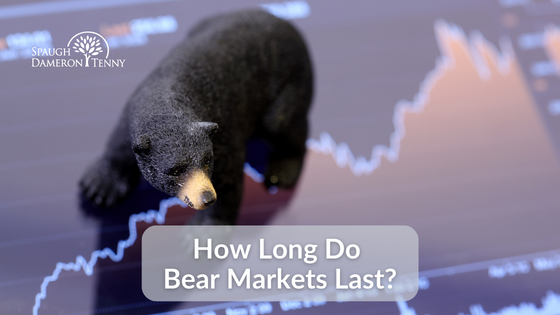2022 has been a less comfortable year for investors than the last decade. As a result, at the midpoint of the year, you may find yourself experiencing what is an uncomfortable but normal part of the market cycle and wonder how long it will last.

For the better part of 15 years, many in the financial industry have been asking how long the bull market will last.
Did you know that our country hasn't really had a recession of significance or a bear market correction since 2008? And so, many working in the financial services industry have been saying it cannot last forever. And so, for many of us, we were saying this can't last forever. Historically, recessions and contractions in bear markets are expected. And so, it is reasonable to say that this is one of the most expected bear markets in history. Notwithstanding the brief period in 2020 when fear and uncertainty caused the markets to drop significantly at the start of the COVID outbreak, this has been a long-anticipated bear market.
It seems like a little context is appropriate to address the question of how long it will last or how long it takes to reach the bottom. For example, the table below illustrates that the U.S. has experienced 12 bear markets since World War II.

A bear market is traditionally described or defined as a 20% or more drawdown from previous market highs.
Obviously, the market is down much more frequently than this five, ten, or fifteen percent. But there have been twelve periods where we have seen the market drop more than 20% off its pre-trading high. These have been bear markets in each decade except the 90s. That was a period of consistent and strong growth that we often remember. Technically, since the 2000s, we have experienced three bear markets if you count the start of COVID.
In the center column, the decline ranges from 20% to as high as 57% during the Great Recession, a super uncomfortable time for many. The next column shows the time it takes in months to go from peak to trough. While some are short, like the COVID correction, some have been longer, lasting nearly three years, like the start of the century.
On average, it takes about twelve months for the market to work through the excesses and reach the bottom.
It is mid-summer 2022, and markets have not recorded a new bottom for the last four or five weeks. And in fact, the month of July showed returns of 9% to 12% for the S&P and NASDAQ, respectively. But what happens next? The final column in the table shows how many months it took to break even historically, with the average being 21 months, a little over a year and a half in 2020.
After the COVID correction, the market rebounded back to its pre-trading high in six months. At the start of the century, it took four, but on average, it is a little over a year and a half.
For a market to return to its pre-trading levels after being down a third, it does not simply go back up by a third. The market will need to return 50% in order for it to reap its pre-trading levels if it's been down by a third.
Here is a simple illustration
Imagine you have a three-gallon bucket of water, and one gallon evaporates. You have now lost a third of the water in your bucket. But to fill it back up, you will need to add 50% more water than is remaining in your bucket. So you will need to add one gallon to the two gallons to end up with three gallons.
This may be too much math or too few visual AIDS, but it is crucial to driving home a key point for those of you who can remain patient and disciplined, or even better, to add money to your portfolios. As the market is going down, when it returns to pre-market trading levels, you will have experienced a beautiful thing about investing; the volatility and downturns are always short-term and temporary. But the long-term growth of capital markets is permanent.
As we often say, building and overseeing a portfolio based on history and aligned with your goals and plans is essential and not based on reacting to headlines or sensational financial news.
We stand ready, willing, and able to answer any questions you have to help you and your family continue to navigate towards what's most meaningful to you. Don't hesitate to get in touch with one of our SDT financial planners if you have questions or what to talk about your financial goals and dreams.
CRN202508-2873194

Shane Tenny, CFP®, is the Managing Partner of Spaugh Dameron Tenny and a nationally recognized financial advisor. Since 2000, he has combined extensive financial knowledge with a passion for behavioral finance—helping clients make informed decisions based on both data and mindset. Shane often contributes to industry publications, appears as a guest on podcasts, and has been a leader in the financial planning field for years. He is known for making complex topics clear and practical for busy, high-income professionals seeking personalized advice they can trust.
After more than two decades helping families across the country, I’ve learned something surprising: Even highly successful people don’t always know ...
Read More →One of the challenges of being in a high-earning profession — whether in healthcare, business leadership, or another demanding field — is making ...
Read More →Who’s Really Coordinating Your Financial Playbook? If you’ve ever felt like managing your finances is a full-time job on top of your actual full-time ...
Read More →